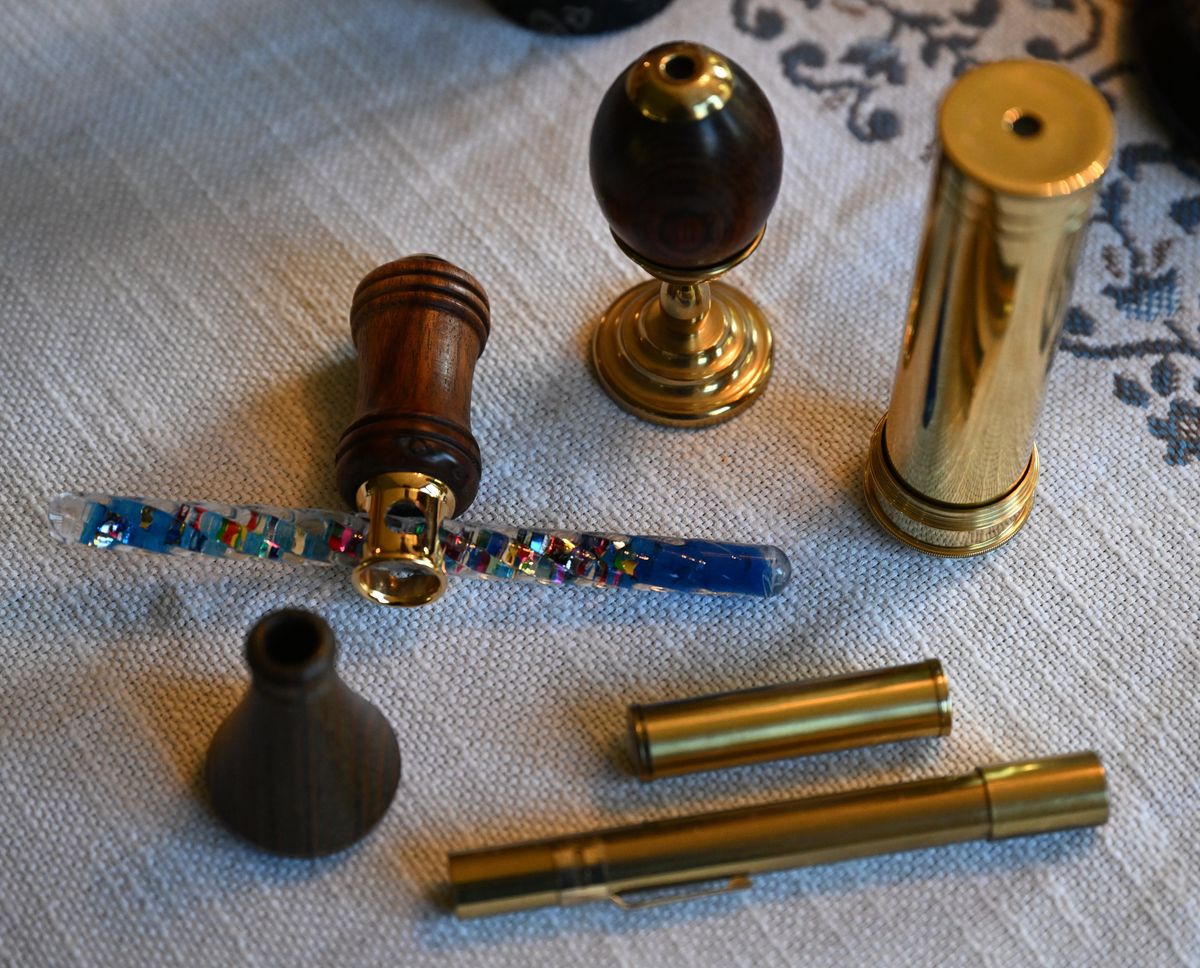The Collector: Jan Abrams’ kaleidoscopes include handmade artworks and antiques

Jan Abrams sees the world in a wonderfully colorful way thanks to her collection of kaleidoscopes.
“I got my first one when I was in first or second grade,” she said.
She didn’t start collecting, however, until 1985.
“We were going around to a lot of craft fairs and traveling to places where they had gift shops that sold bright, shiny things,” Abrams said. “I just really liked them.”
Invented in 1816 by Scottish physicist Sir David Brewster, kaleidoscopes weren’t intended to be toys. During the Victorian era, elegant homes had parlor scopes for family entertainment. By the mid-1900s, manufacturers began making them out of cardboard and marketing them to kids.
The only toy version Abrams owns features a cartoon cat; it was made in occupied Japan. She winnowed her collection when she and her husband downsized in 2015, giving her original kaleidoscope and many others to her nieces and nephews at a family reunion.
She kept more than 30 of her most interesting items, most of which were made by kaleidoscope artists. While many of them are the traditional tubular shape, others offer surprises.
A tiny wooden music box features a pearlescent multihued disc that spins when the box is wound. A small eyepiece allows the viewer to admire the patterns reflected by the disc.
“I have no idea where I got it,” Abrams said.
A triangular double-wheel version with ornate metalwork and faux gemstones is lovely to look at but a bit difficult to use. She held it up to her eye and turned the wheels.
“I’m not that fond of them, but they’re interesting because you can see infinitely different patterns.”
She pointed to a turquoise triangular kaleidoscope with a wand attached to it.
“This is the closest thing to a hippie scope,” Abrams said. “You lift the wand and look through the scope at it.”
A variety of patterns appears as the wand is slowly turned. Four velvet-covered tubes were made by the same artist, Craig Huber. The tallest features three mirrors.
“The reflection comes right back to your eyes,” Abrams said. “The others have two mirrors, and the reflection stays at the end of the tube.”
She selected a purple cardboard kaleidoscope and pointed to the writing on it.
“This is most unusual. It’s a Karascope from the Smithsonian gift shop. The artist made high-end kaleidoscopes and decided to make some more affordable ones to sell to the masses.”
A green marble scope with brass ends rests on a matching stand. It’s a teleidoscope – a kind of kaleidoscope with a lens and an open view instead of an object case. It can be used to view patterns from objects outside the instrument, such as a light fixture or trees through a window.
One of her favorite artists, Corki Weeks, specializes in brass scopes.
“They are so heavy,” Abrams said.
Weeks is known for her innovative mirror systems and skill at arranging color, texture and a variety of shapes inside oil-filled cells.
Another kaleidoscope features a transparent object case with colorful bits of plastic or glass floating in oil. Another came with a small bag of marbles.
“It’s a marble scope,” she said. “The object case is actually a marble. You move the marble around in whatever direction you want.”
Several smaller items made of brass or wood are Van Court kaleidoscopes.
“I got four because they were so small,” she said, pointing to an egg-shaped scope resting on a brass stand.
Every item in her collection offers the viewer a unique visual experience. From peering at jewel-toned mandalas to black and ivory lacy patterns to pastel-toned shapes, the images change from kaleidoscope to kaleidoscope and from one turn of the tube to the next.
That’s what Abrams enjoys most about them, though she does advise caution.
“If you spent as much time looking through them as you wanted to, you wouldn’t get anything done!” she said. “They’re mesmerizing.”